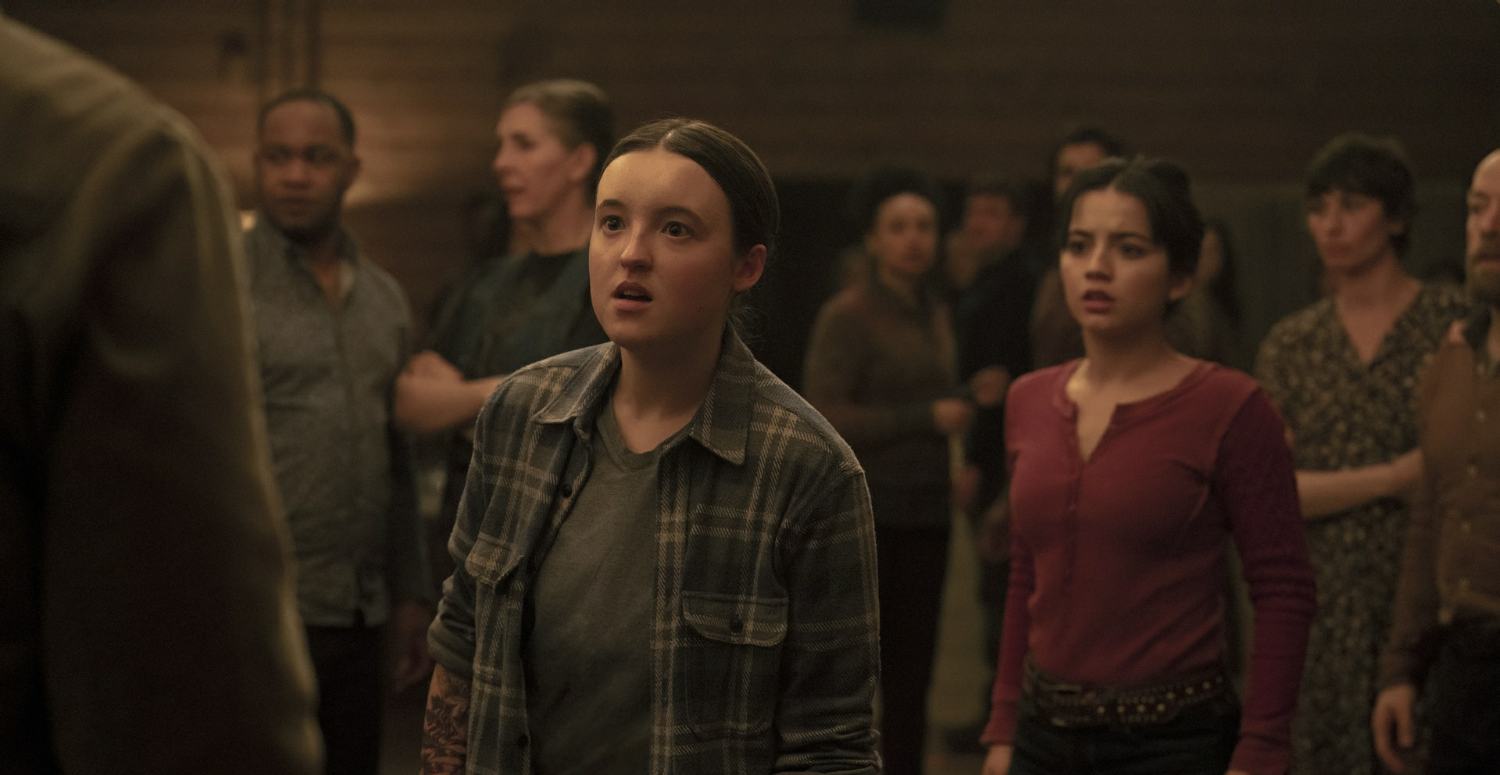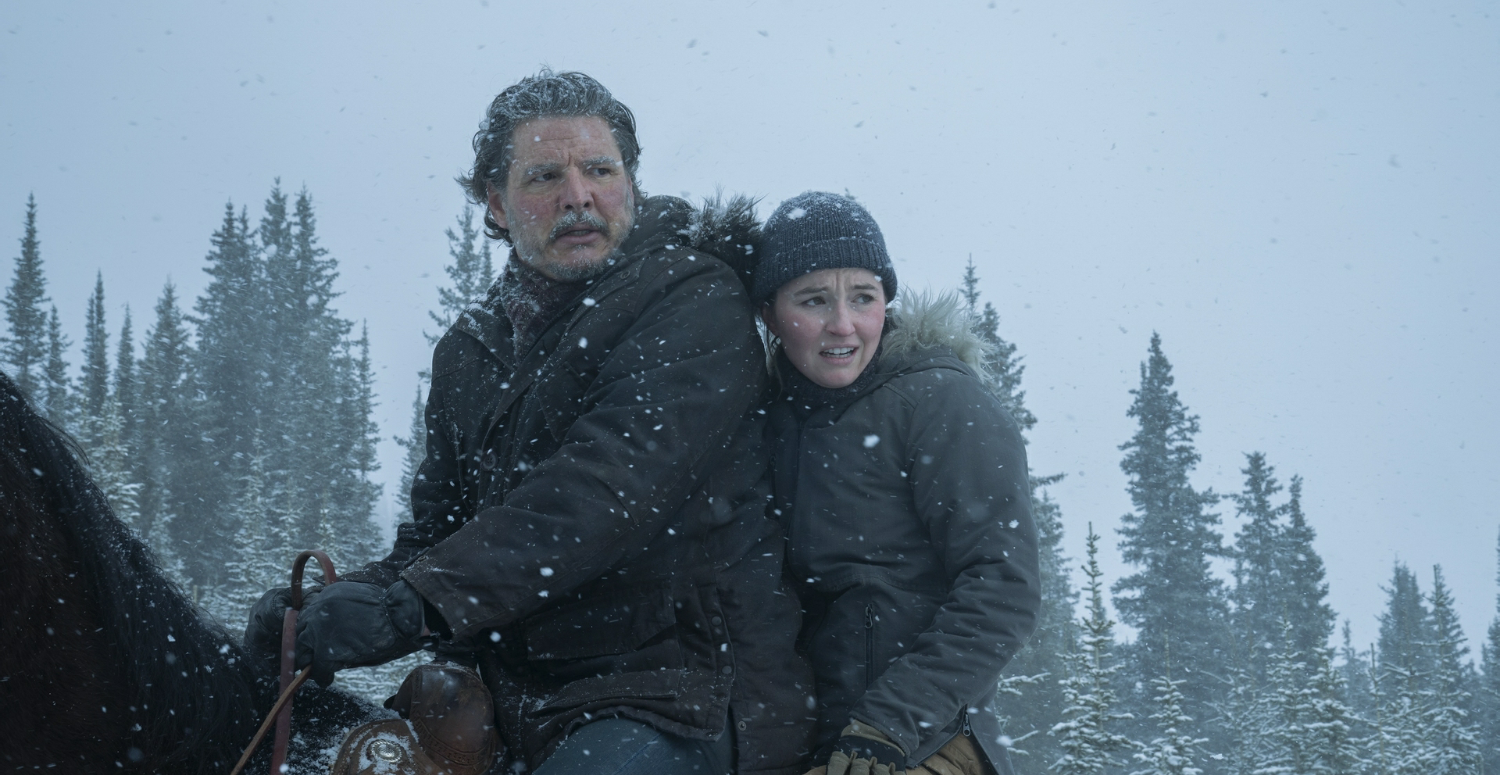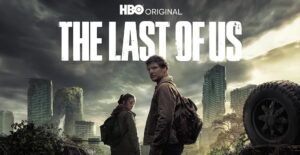The Last of Us
[TV]
Saison/Season 2
2025

FR EN
Deux ans après une première saison très convaincante qui réussissait une superbe adaptation du jeu vidéo éponyme, l’une des séries phares de HBO était inévitablement attendue au tournant pour tous les fans de cette grande aventure post-apocalyptique ravagée par une pandémie de cordyceps. Que réserve alors cette nouvelle saison – qui adapte la moitié du second jeu vidéo, laissant la suite pour la troisième et ultime saison – à notre attachant duo de protagonistes ? Que restera-t-il de notre humanité ? De l’individu en communauté ? Jusqu’où l’obsession de vengeance poussera-t-elle les personnages ? Comment une figure paternelle hantée par la fin de saison 1 assumera-t-elle son geste ? Resserrée sur sept épisodes, cette seconde saison s’ouvre après une ellipse de cinq ans sur la nouvelle vie de ses protagonistes au quotidien paisible dans les montagnes enneigées du Wyoming …
Entre les ‘infectés’ affamés (et évolués), les groupuscules paramilitaires, les sectes sanguinaires, et une nature fondamentalement hostile, la saison 2 multiplie les menaces et exploite habilement les codes du genre dans un équilibre réussi entre scènes d’action spectaculaires, explorations anxiogènes de bâtiments infestés, et séquences plus intimistes. Cette fois-ci la trame est plus simple, avec plus d’action mais toujours autant de tension au gré de cliffhangers intrigants et de coups de théâtre choquants. Si dans « The Last of Us » le fil narratif est bien horrifique, le choc est quant à lui émotionnel car sous toute la terreur d’un tel monde, il y a bien des êtres humains et des héros complexes et attachants malgré leurs failles. Le scénariste Craig Mazin (Chernobyl) continue en effet de mettre de l’humain dans l’effroi en auscultant l’état d’esprit de ses personnages entre amitié et amour dans un cercle de la violence qui se referme sur eux. Ici, l’enfer c’est les autres. La violence vient de partout dans ce monde et avant tout des humains eux-mêmes – les ‘infectés’ sont progressivement de moins en moins présents – démontrant ainsi que la violence elle-même est un fléau bien pire que le terrible virus qui a décimé l’humanité.

En somme nombre de qualités de la première saison sont toujours présentes, des splendides paysages et décors que l’on traverse en apnée aux scènes marquantes et métaphoriques, sans oublier un scénario qui offre d’excellents développements de personnages et de fins dialogues – en particulier en début de saison avec trois premiers épisodes de très grande qualité. Mais finalement c’est bien dans sa structure narrative que le bât blesse avec une deuxième moitié de saison où l’action et l’accumulation d’objectifs semblent être la clé. Cela crée un rythme d’urgence et de survie qui contraste fortement avec une première moitié qui prenait plus le temps de poser ses enjeux, d’approfondir les relations entre personnages, et d’explorer l’environnement géographique et social – dans la veine de la première saison. Là tout va plus (et trop ?) vite, les personnages passent d’un endroit à un autre dans une zone que l’on vient à peine de découvrir et que les protagonistes sont en train d’explorer avec tous ses nouveaux personnages et communautés divisées entre elles. D’autant qu’en plein milieu de cette narration frénétique, la série propose un épisode full flash-back plus lent qui casse alors cette accélération du rythme, pour offrir certes de très belles scènes mais aussi apporter une révélation majeure qui aurait clairement eu plus de poids plus tard.
Alors oui, la narration offre de belles surprises et une création de monde intéressante (bien que les showrunners aient décidé d’en laisser une grosse partie pour la saison 3), mais elle manque parfois de subtilité et mériterait clairement de prendre plus son temps. En revanche, l’adaptation du jeu opte pour un changement intéressant en faisant regretter au personnage principal ses choix, l’éloignant ainsi quelque peu de la brute qu’elle devient dans le jeu pour la rendre plus nuancée. Au final, « The Last of Us » reste une excellente série, avec néanmoins une bonne seconde saison légèrement frustrante mais qui pourrait résonner d’autant plus avec la troisième et ultime saison d’ici deux ans.
Two years after a highly compelling first season that delivered an outstanding adaptation of the video game of the same name, one of HBO’s flagship series was bound to be eagerly awaited by all fans of this post-apocalyptic adventure set in the midst of a cordyceps pandemic. So, what does this new season – which adapts half of the second video game, leaving the rest for the third and final season – have in store for our endearing duo of protagonists? What will remain of our humanity? Of the individual in community? How far will the obsession with vengeance push the characters? How will a father figure haunted by the end of Season 1 cope with his deeds? Shortened to seven episodes, this second season opens after a five-year time gap with the new peaceful daily life of its protagonists in the snow-covered mountains of Wyoming …
Between the hungry (and evolved) ‘infected’, the paramilitary groups, the bloodthirsty cults, and a fundamentally hostile nature, season 2 increases the threats and skillfully draws on the codes of the genre in a successful balance between spectacular action scenes, anxiety-inducing explorations of infested buildings, and more intimate scenes. This time around, the plot is simpler, with more action but just as much tension, thanks to intriguing cliffhangers and shocking plot twists. While the narrative thread in “The Last of Us” is indeed horrific, the shock is emotional, because underneath all the terror of such a world, there are human beings and heroes who are complex and endearing, despite their flaws. Screenwriter Craig Mazin (Chernobyl) continues to bring humanity to dread, examining the state of mind of his characters between friendship and love in a circle of violence that closes in on them. Here, hell is just other people. Violence comes from everywhere in this world, and above all from humans themselves – the ‘infected’ are in fact progressively less prevalent – demonstrating that violence itself is a far worse plague than the terrifying virus that wiped out mankind.

All in all, plenty of the strengths of season one is still there, from the breathtaking scenery and landscapes you’ll breathlessly wander through to the striking, metaphorical scenes, as well as a script that offers excellent character development and sharp dialogue – particularly at the start of the season, with three top-quality first episodes. But ultimately, it’s the narrative structure that proves to be the main weakness, with a second half of the season in which action and the accumulation of targets seem to be the key. This creates a pace of urgency and survival that contrasts sharply with the first half, which took more time to set the stakes, deepen relationships, and explore the geographical and social environment – very much like the first season. Here, everything moves more (and too?) quickly, with the characters moving from one place to another in an area we’ve only just discovered, and which the protagonists are in the process of exploring with all its new people and communities divided between them. And right in the middle of this frenetic narrative, the series throws in a slower, full-flashback episode that breaks the acceleration of pace, offering of course some truly beautiful scenes, but also introducing a major revelation that would clearly have had greater impact later on.
So yes, the storytelling delivers some great surprises and interesting world-building (although the showrunners decided to leave a big chunk of it for season 3), but it sometimes lacks subtlety and clearly deserved to take its time a bit more. On the other hand, the game adaptation makes an interesting change by making the main character regret her choices, thus distancing her somewhat from the ruthless beast she’s in the game to make her more nuanced. All in all, “The Last of Us” remains an excellent show, albeit with a slightly frustrating but good second season that could resonate all the more with the third and final season in two years’ time.

